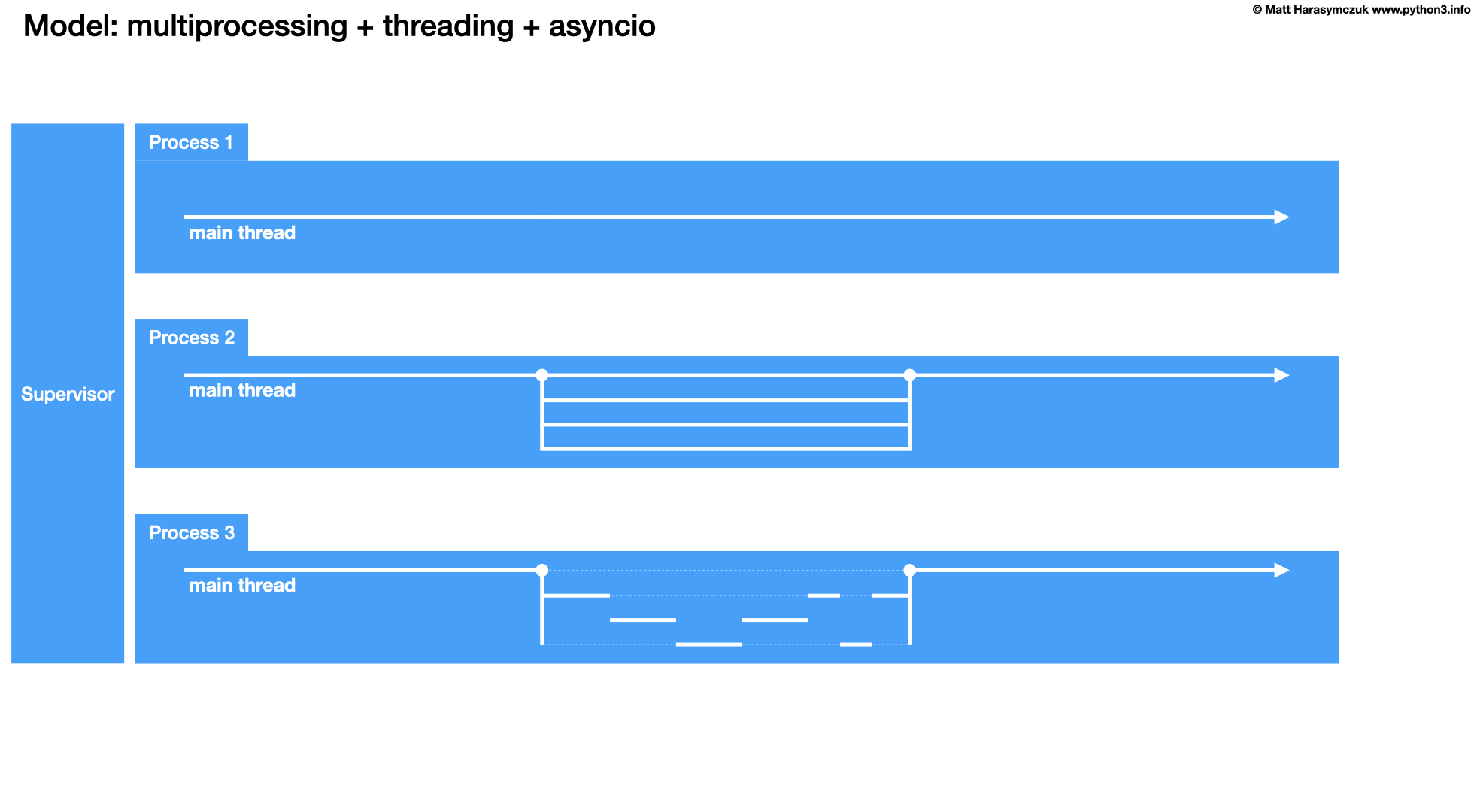15.1. Async About
Latency problem - time from the user action to the appearance of the first UI element user can interact with
General rule for frontend frameworks - don't block the foreground, let the long running operations to run in background, and leave the user interface interactive
Concurrency and Parallelism
CPU-bout vs. I/O Bound
CPU-bound Concurrency:
Using Queues and Multiprocessing
Using Futures and Multiprocessing
I/O-bound Concurrency:
Using Queues and Threading
Using Futures and Threading
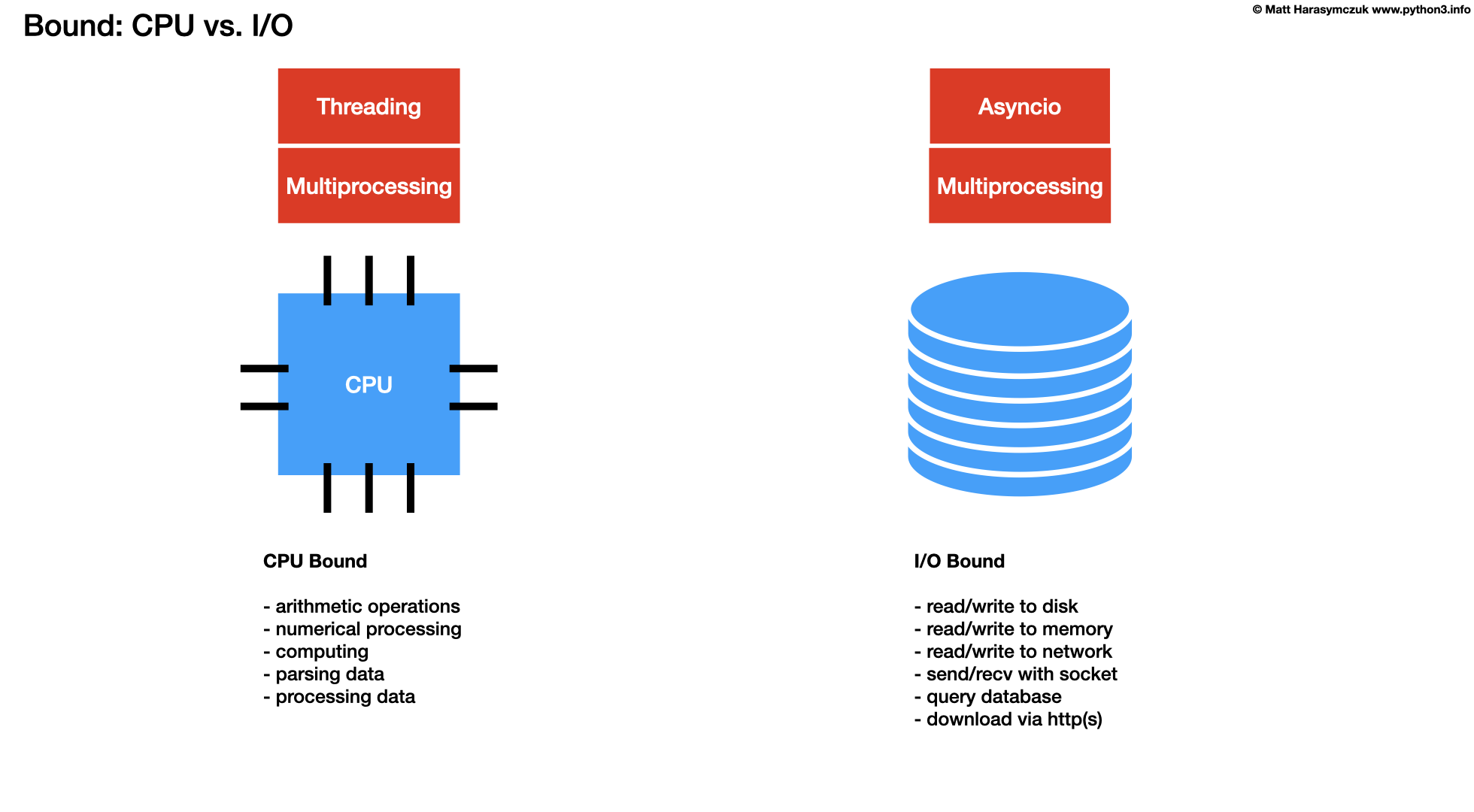
15.1.1. Classification of concurrency problems
Martelli Model of Scalability
1 core: Single thread and single process
2-8 cores: Multiple threads and multiple processes
9+ cores: Distributed processing
Martelli's observation: As time goes on, the second category becomes less common and relevant. Single cores become more powerful. Big datasets grow ever larger [to use 2-8 cores].
Source: [1]
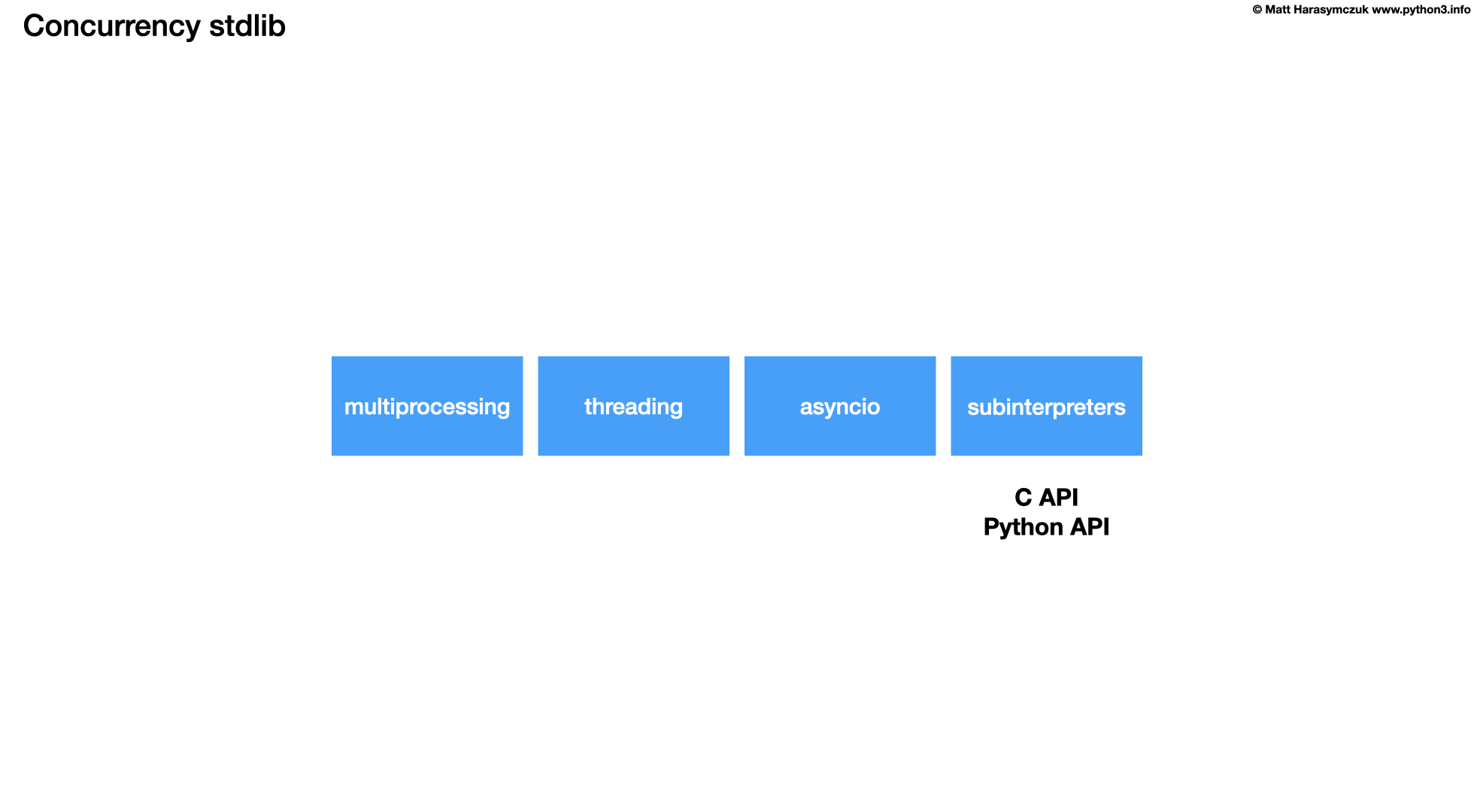
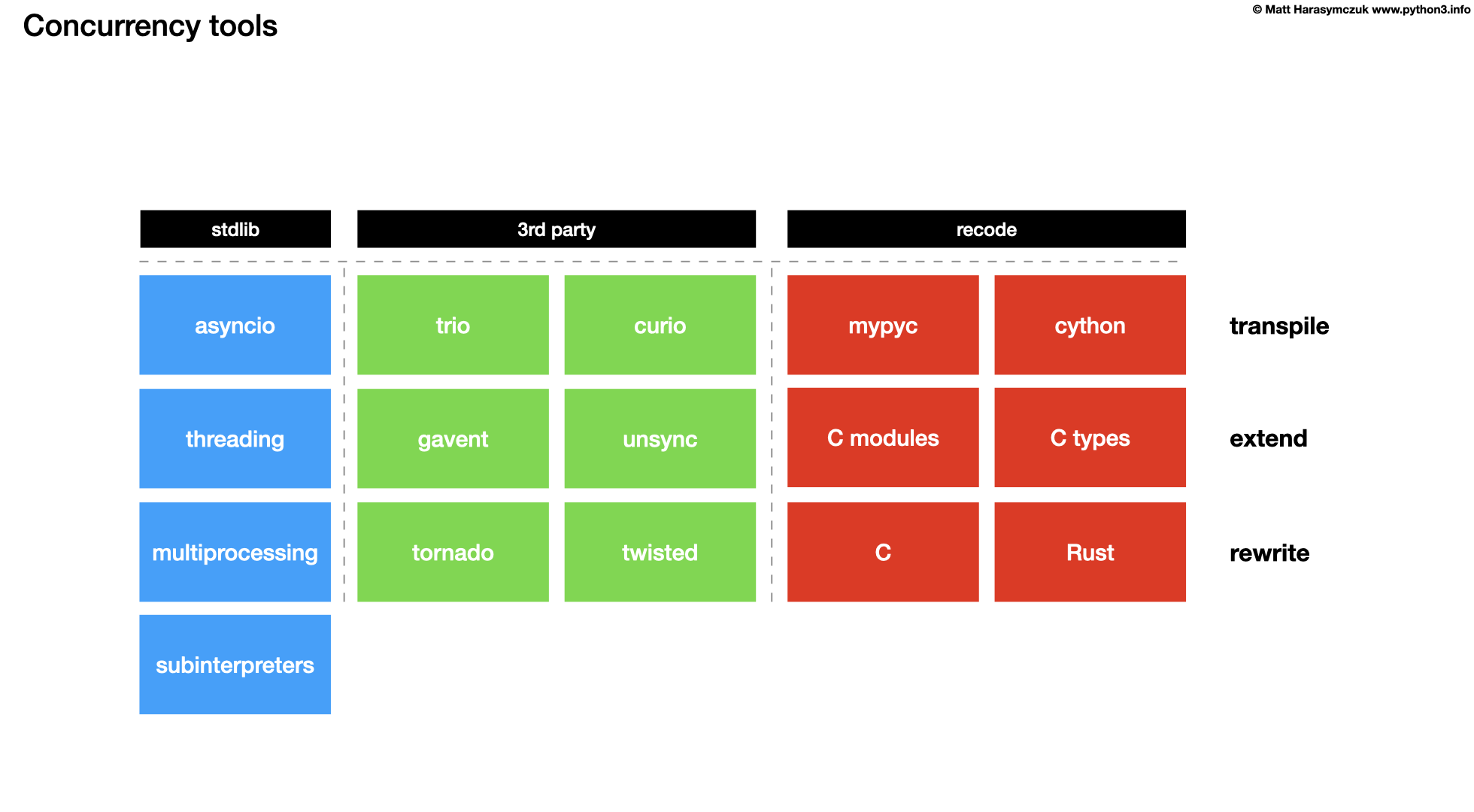
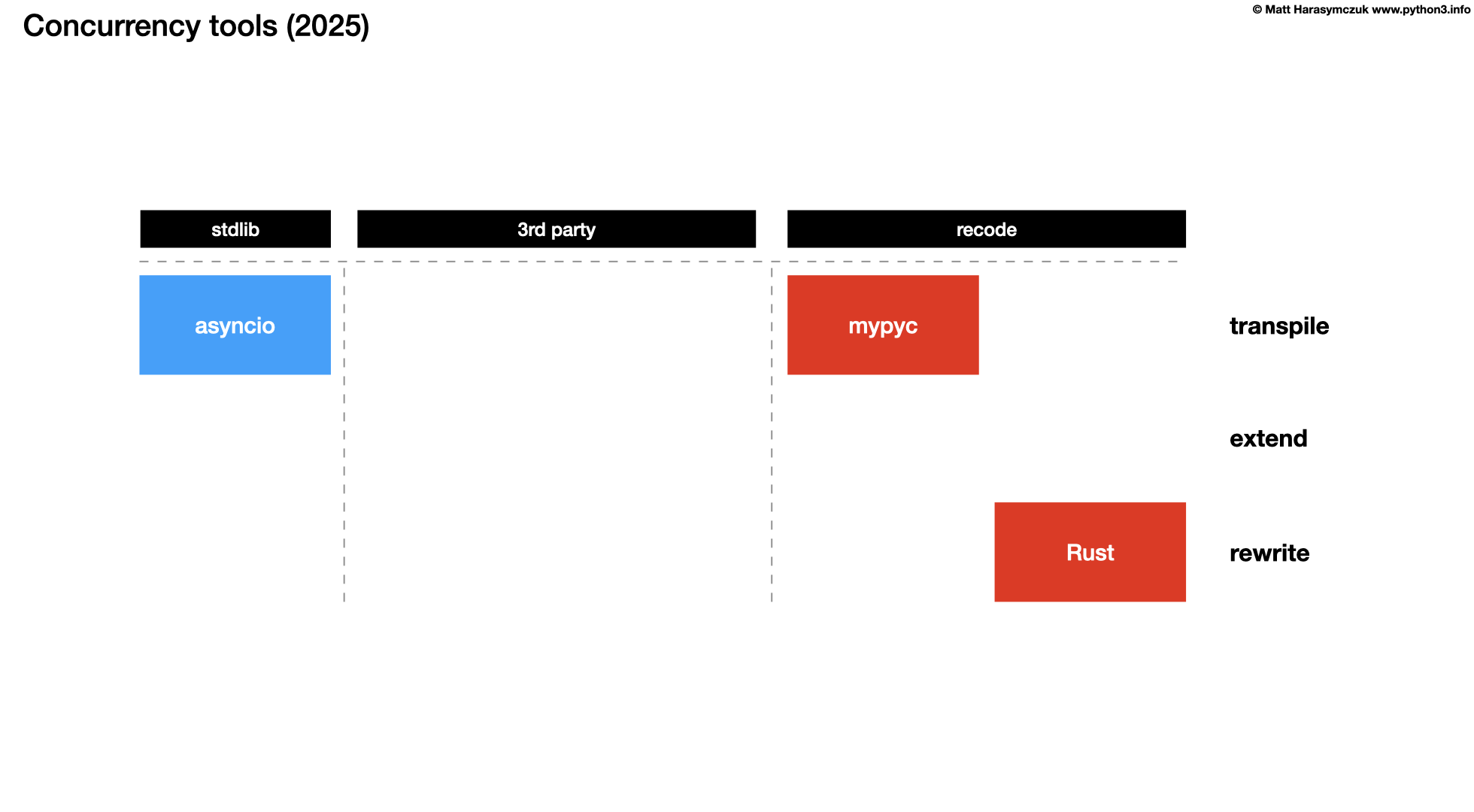
15.1.2. GIL
Global Interpreter Lock
CPython has a lock for its internal shared global state
One lock instead of hundreds smaller
The unfortunate effect of GIL is that no more than one thread can run at a time
For I/O bound applications, GIL doesn't present much of an issue
For CPU bound applications, using threads makes the application speed worse
Accordingly, that drives us to multiprocessing to gain more CPU cycles
Larry Hastings, Gilectomy project - removed GIL, but Python slowed down
Source: [1]
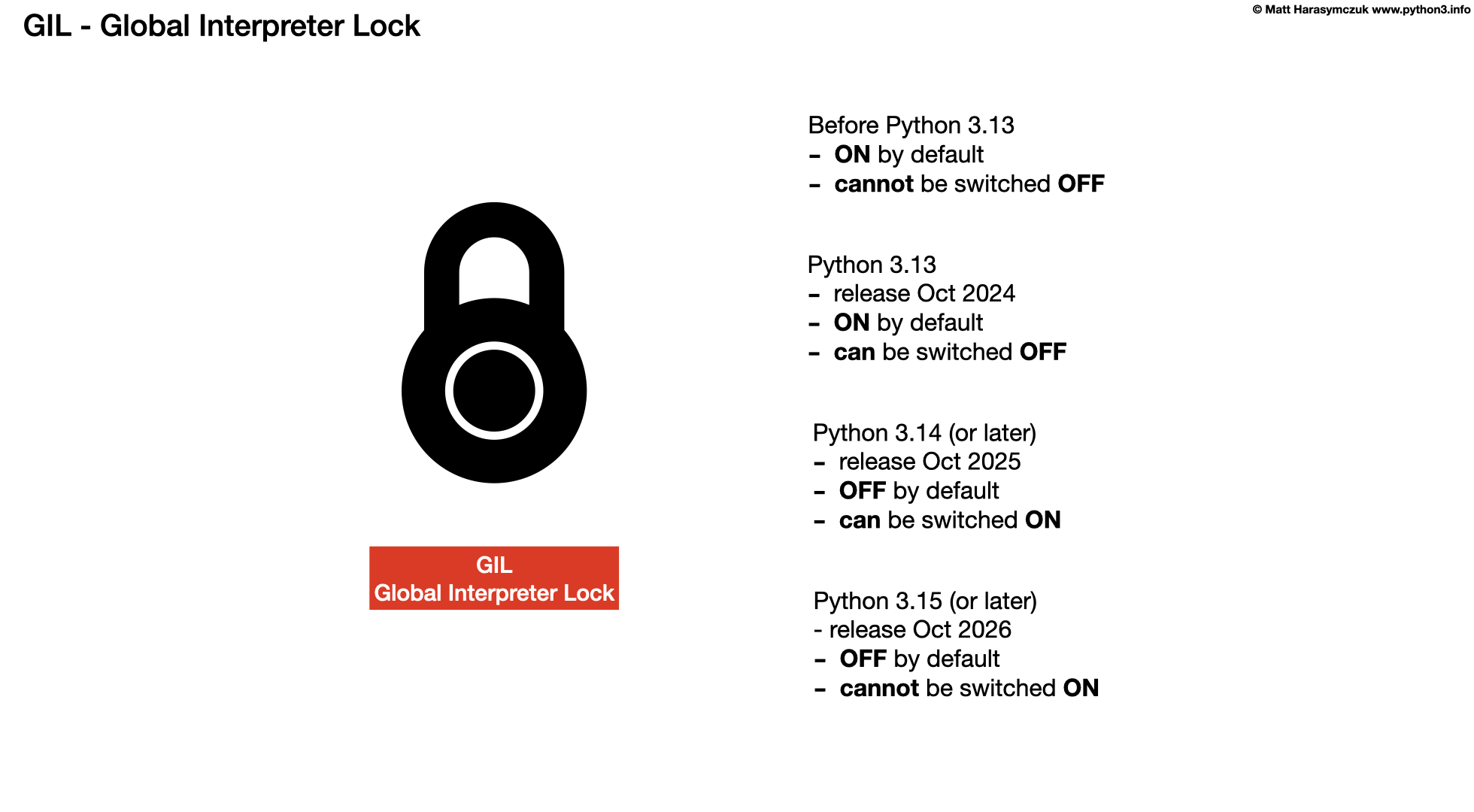
15.1.3. Multiprocessing
What is a process?
How long does it take to create processes?
Who manages the processes?
How many parallel processes can there be?
What is
nice?How to communicate between processes?
Processes are completely independent of each other.
No need to set locks because they do not interfere with each other.
The operation of one does not affect the other.
Memory is separated.
The disadvantage of processes is the lack of communication (hence the need for IPC methods, e.g., pickle).
Very high cost associated with communication and serialization.
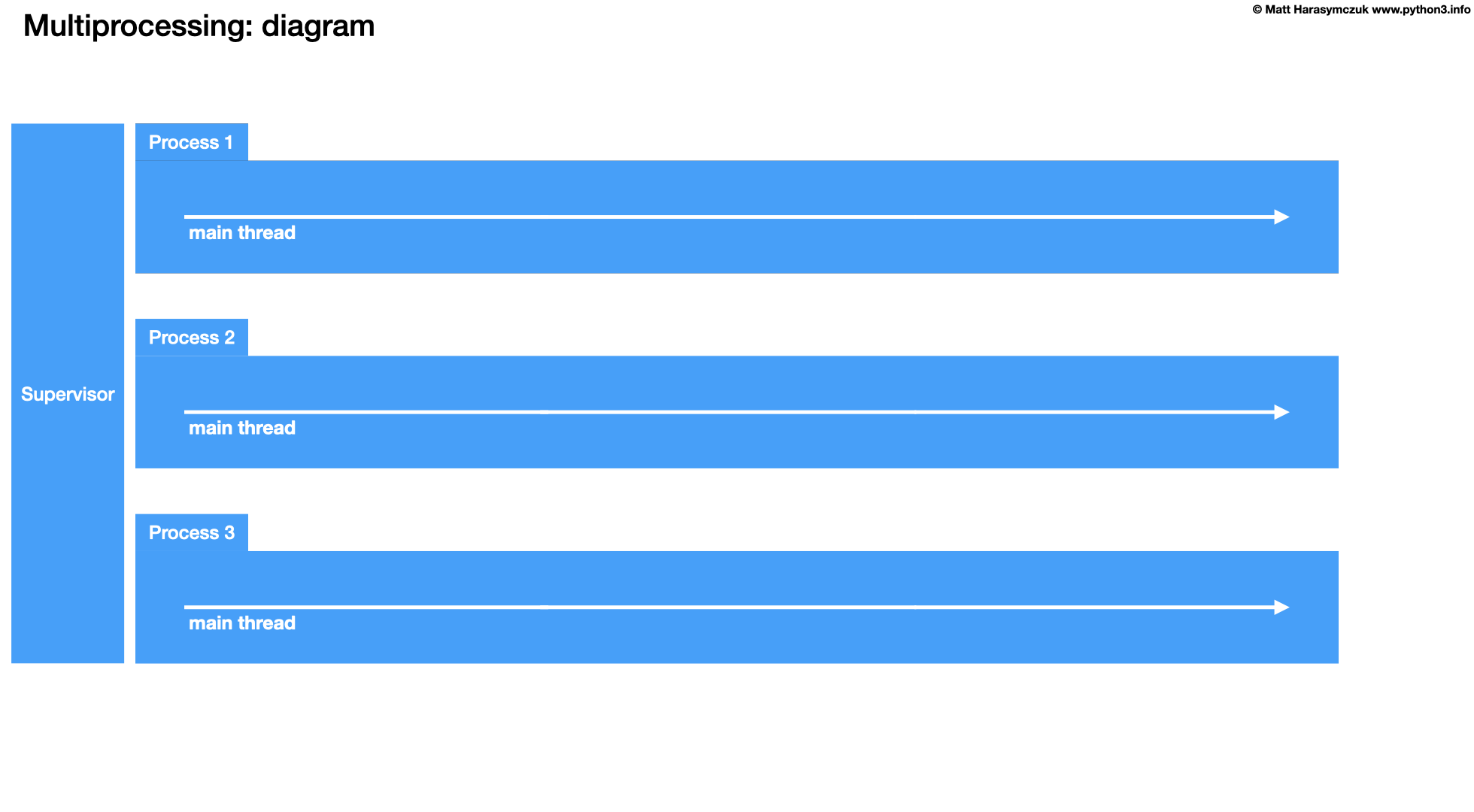
15.1.4. Threading
What is a thread?
How long does it take to create threads?
Who manages the threads?
How many parallel threads can there be?
How many threads can be within a single process?
How to communicate between threads?
Is shared memory between threads good or bad?
The advantage of threads is that they have a shared state.
One thread can write code to memory and another can read it without communication overhead.
The disadvantage is also the shared state and race conditions.
The idea of threads is cheap access to shared memory, but you need to put locks everywhere.
Run very fast, but hard to get correct.
It's insanely difficult to create large multi-threaded programs with multiple locks.
Even if you lock a resource, there is no protection if other parts of the system do not even try to acquire the lock.
Threads switch preemptively.
Preemptively means that the thread manager decides to switch tasks for you (you don't have to explicitly say to do so). The programmer has to do very little.
This is convenient because you don't need to add explicit code to cause a task switch.
The cost of this convenience is that you have to assume a switch can happen at any time.
Accordingly, critical sections have to be guarded with locks.
The limit on threads is total CPU power minus the cost of task switches and synchronization overhead.
Source: [1]
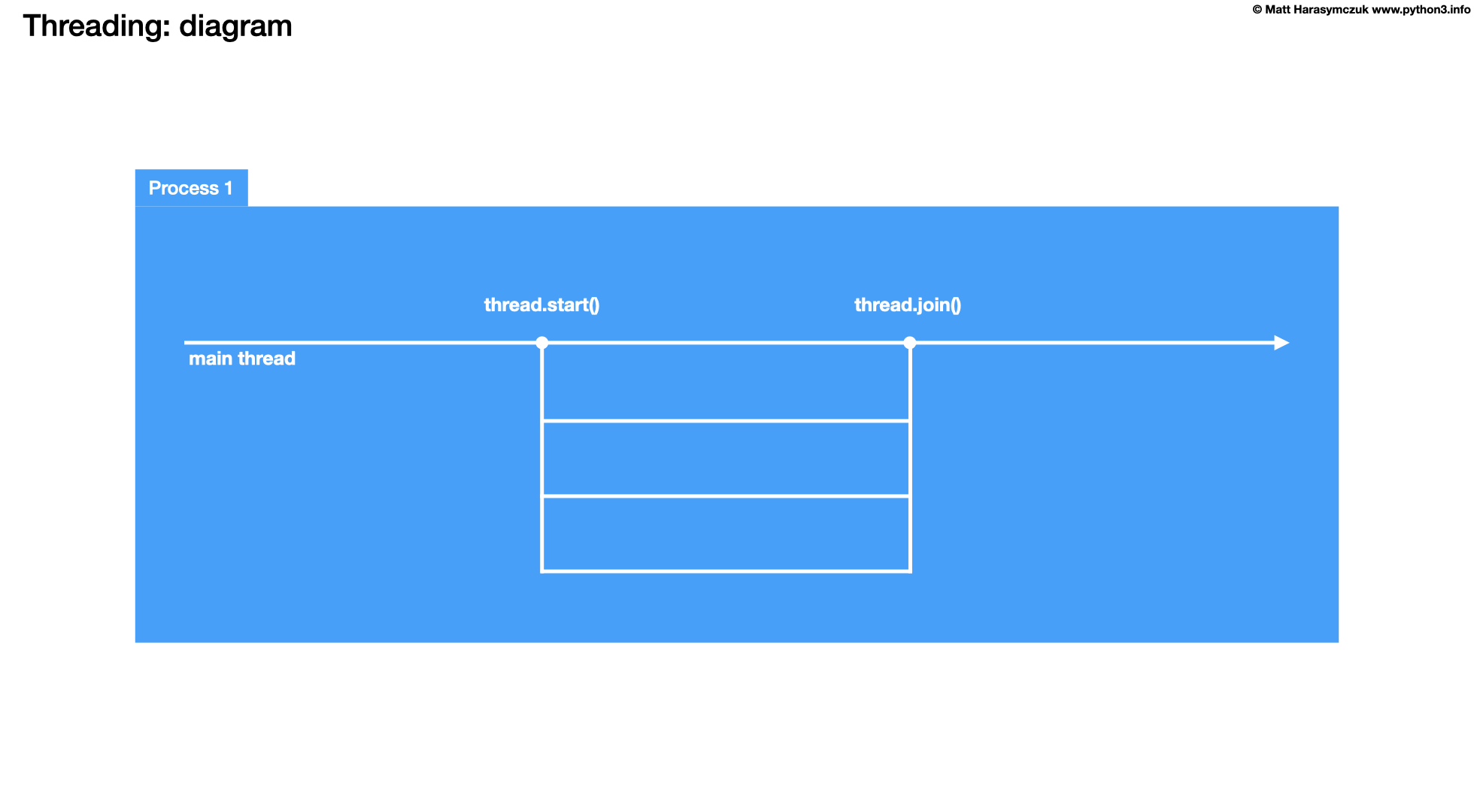
15.1.5. Asynchronous
Running asynchronously: 3s + 1s + 1s = bit over 3s [execution time]
Async is the future of programming
Objective: Maximize the usage of a single thread
Objective: handling I/O asynchronously
Objective: enabling concurrent code using coroutines
Advantage: Async will fill the gaps, otherwise wasted on waiting for I/O
Advantage: You control when tasks switches occur, so locks and other synchronization are no longer needed
Advantage: Cost task switches is incredibly low. Calling a pure Python function has more overhead than restarting a generator or awaitable
Advantage: Function builds stack each time it's called, whereas async uses generators underneath, which already has stack created
Advantage: Async is the cheapest way to task switch
Advantage: In terms of speed async servers blows threaded servers in means of thousands
Advantage: Async is very cheap in means of resources
Advantage: Async world has a huge ecosystem of support tools
Advantage: Coding is easier to get right, than threads
Disadvantage: Async switches cooperatively, so you do need to add explicit code
yieldorawaitto cause a task to switchDisadvantage: Everything you do need a non-blocking version (for example
open())Disadvantage: Increased learning curve
Disadvantage: Create event loop, acquire, crate non-blocking versions of your code
Disadvantage: You think you know Python, there is a second half to learn (async)
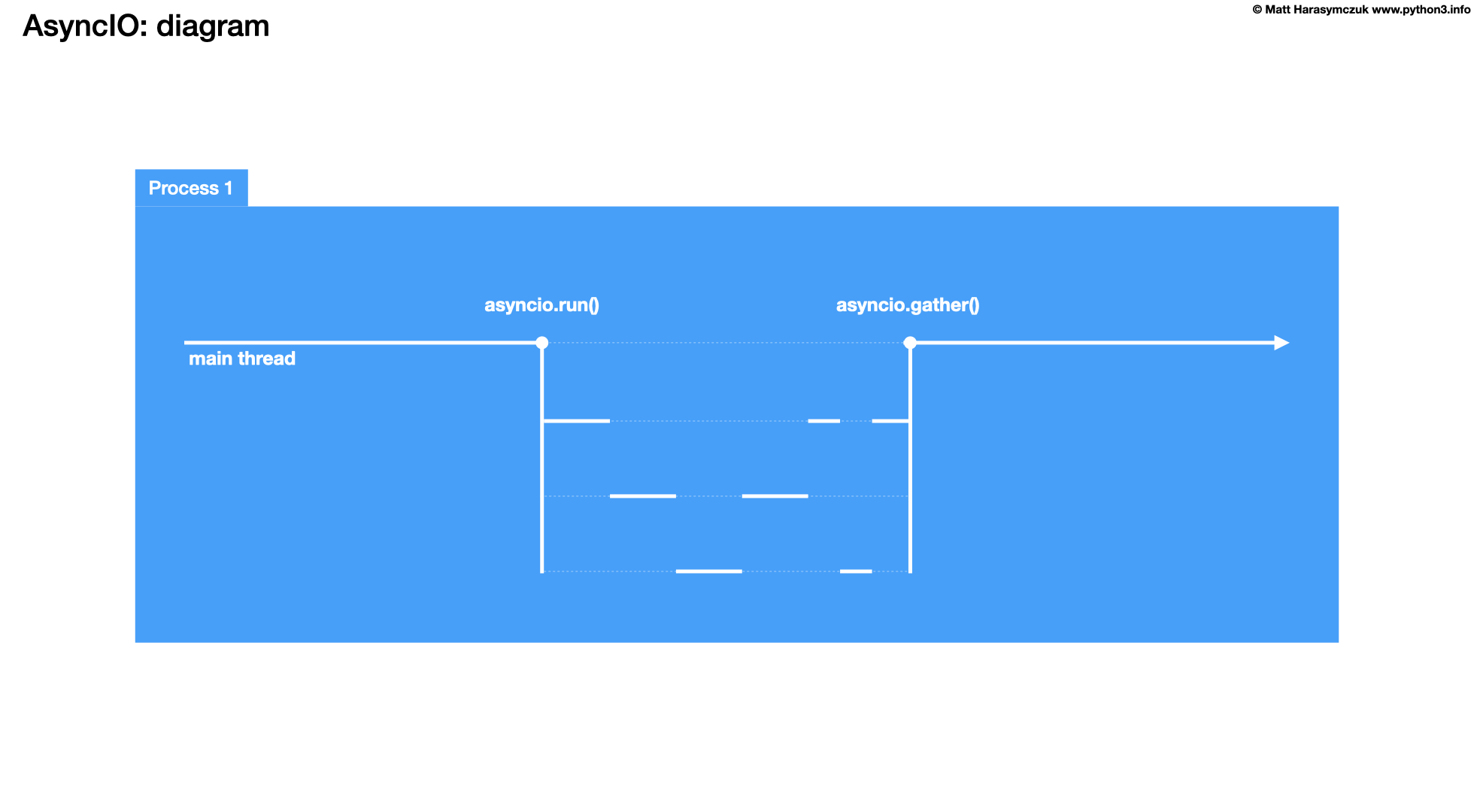
15.1.6. Threads vs. Processes
What is the difference between threads and processes?
How many threads can be processed in parallel on a quad-core processor (with and without Hyper-Threading)?
How many processes can be processed in parallel on a quad-core processor (with and without Hyper-Threading)?
How does the GIL affect threads and processes?
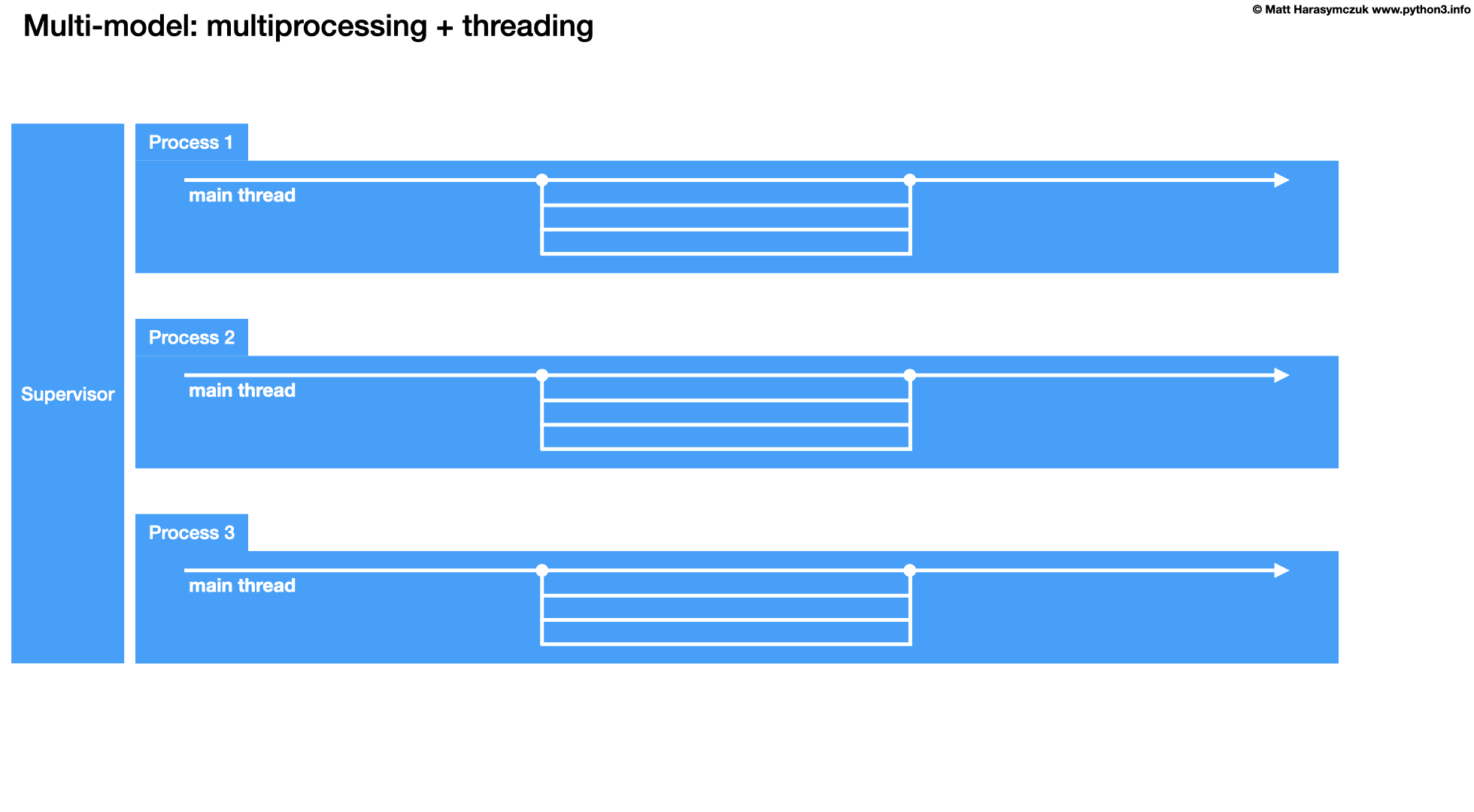
15.1.7. Threads vs. Async
Threads are about workers and async is about tasks
Async maximizes CPU utilization because it has less overhead than threads.
Threading typically works with existing code and tools as long as locks are added around critical sections
For complex systems, async is much easier to get right than threads with locks
Threads require very little tooling (locks and queues)
Async needs a great deal of tooling (futures, event loops, and non-blocking version of just about everything.
Source: [1]
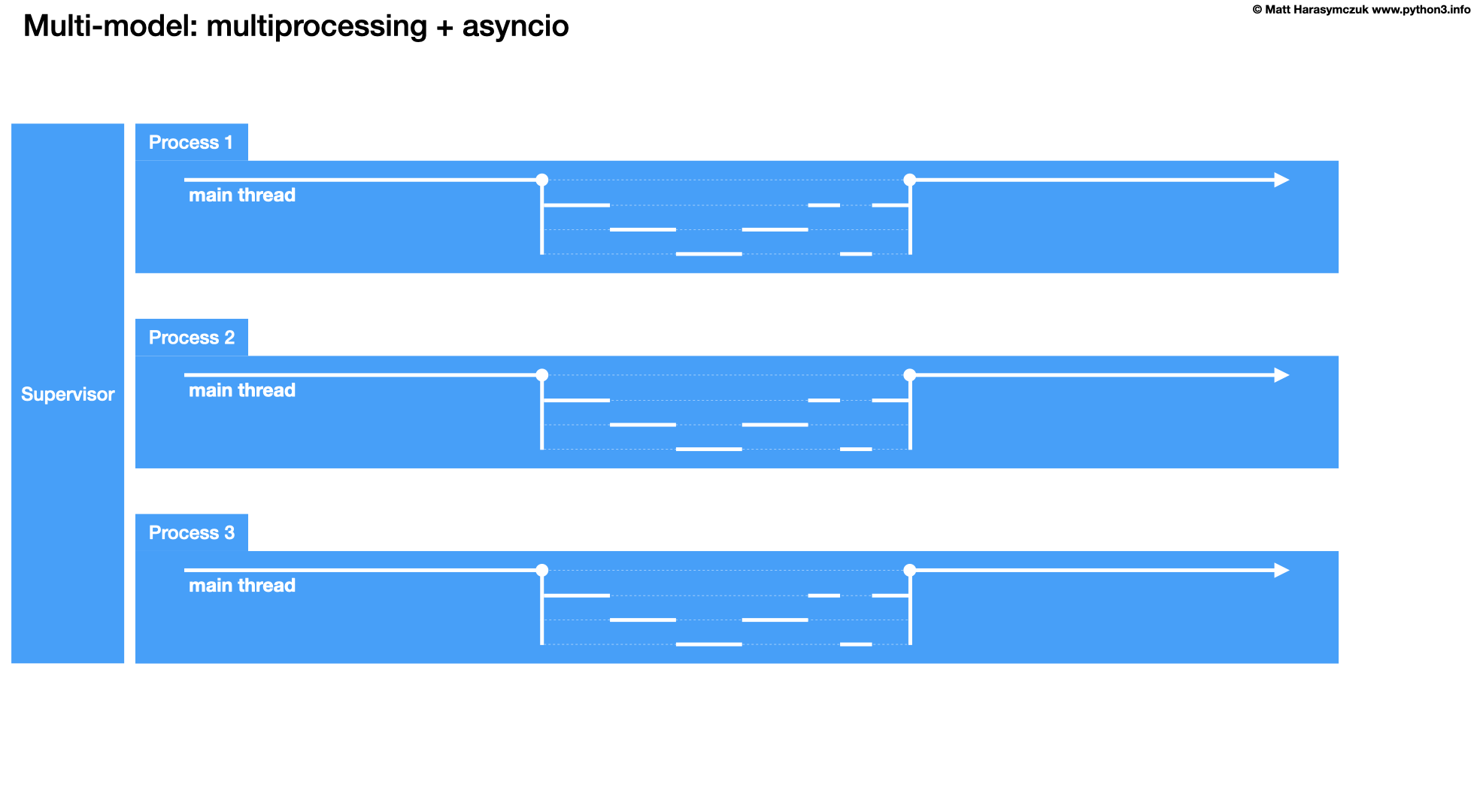
15.1.8. Context Switching
Threads, thread manager does it automatically for you
In Async, you specify places to context switch
Time consuming
Every time you do a print(), the code automatically performs a context switch.
15.1.9. Testing
In concurrent programs (threading, multiprocessing) testing can hide bugs and errors
Some lines of code works so fast, that it requires million runs to make errors to appear
But if you put
sleep()than errors will show upIn Internet of Things (IoT) I'd prefer to stand in front of a car which has code written in async way, than a threaded way
Async is profoundly easier to debug and get it right
Source: [1]
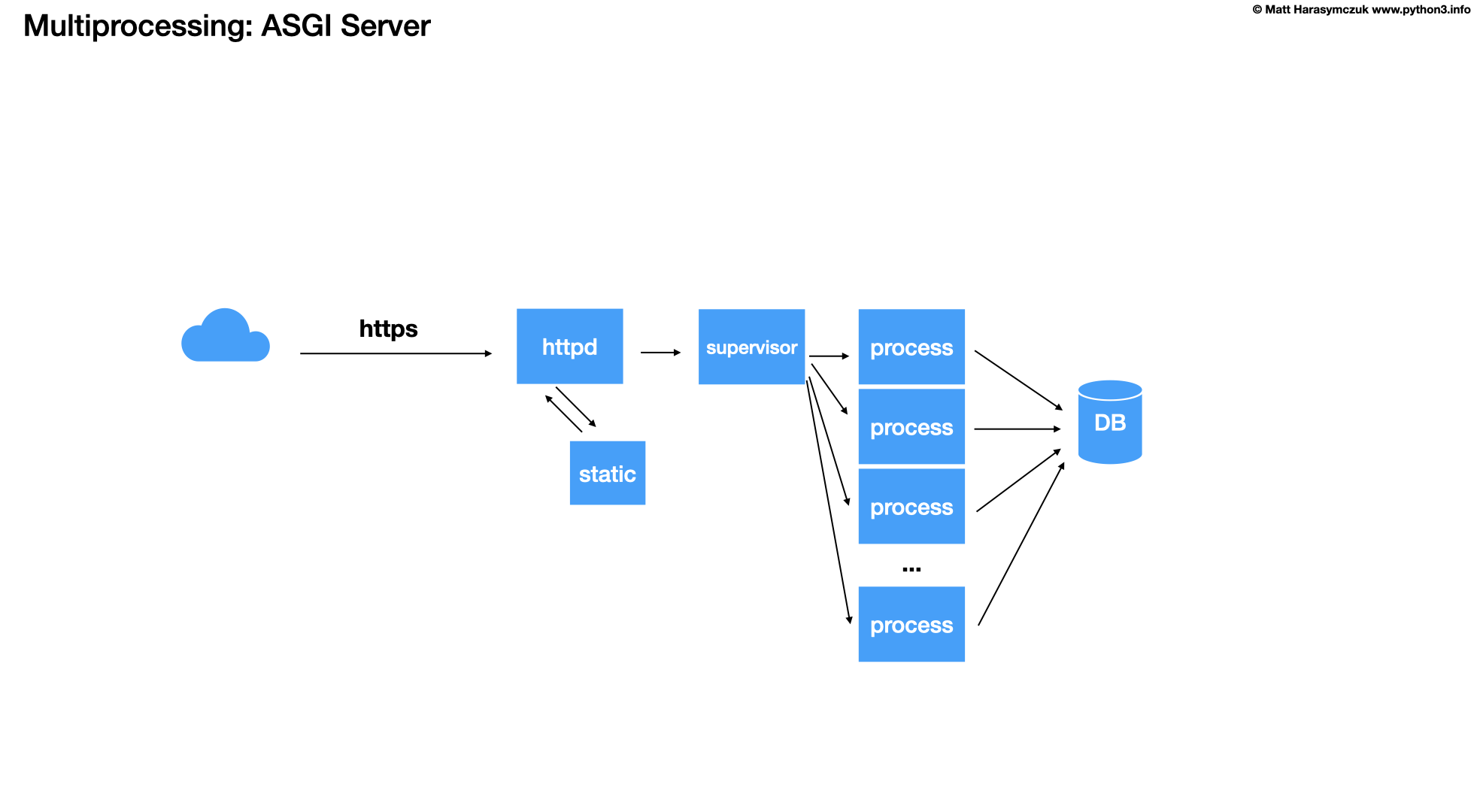
15.1.10. Rules
If step A and B must be run sequentially, put them in the same thread
If there is several parallel threads launched and you want to be sure that all are complete, just
join()all of the threads. It's called "barrier". Example: Several programmers make improvements to the website, they has to merge their work, before releasing website to the public.Daemon thread is a service worker, a task which never suppose to finish (by infinite loop). Instead you
join()on the queue itself. It waits until all the requested tasks are described as being done. Example: a printer sits in the office, it waits for documents, when document arrives, printer prints it, and wait for another job, printer never finishSometimes you need global variable to communicate between functions (this is the reason behind the threading).
In single threaded programs global variables works
In multi-threaded programs, mutable global state is a disaster. The better solution is to uses a
threading.local()that is global WITHIN a thread but not without (thread has local copy of this variable). Example:decimal.Decimalhas this.Never try to kill a thread from something external to that thread. You never know if that thread is holding a lock. Python doesn't provide direct mechanism for kill threads externally; however, you can do it using ctypes, but that is a recipe for a deadlock.
Reason for threads is a shared state. When you have shared state, you've got race conditions. And you manage this race conditions through a locks. You acquire a lock, do stuff and release. What if you get killed, between acquire and release. You never know if this thread acquired a lock. If you kill it, it will become a deadlock for all other threads. That's the reason why there is no API for killing a thread.
For large systems when you need to isolate parts of the running code, use processes, because you can kill them.
Source: [1]
